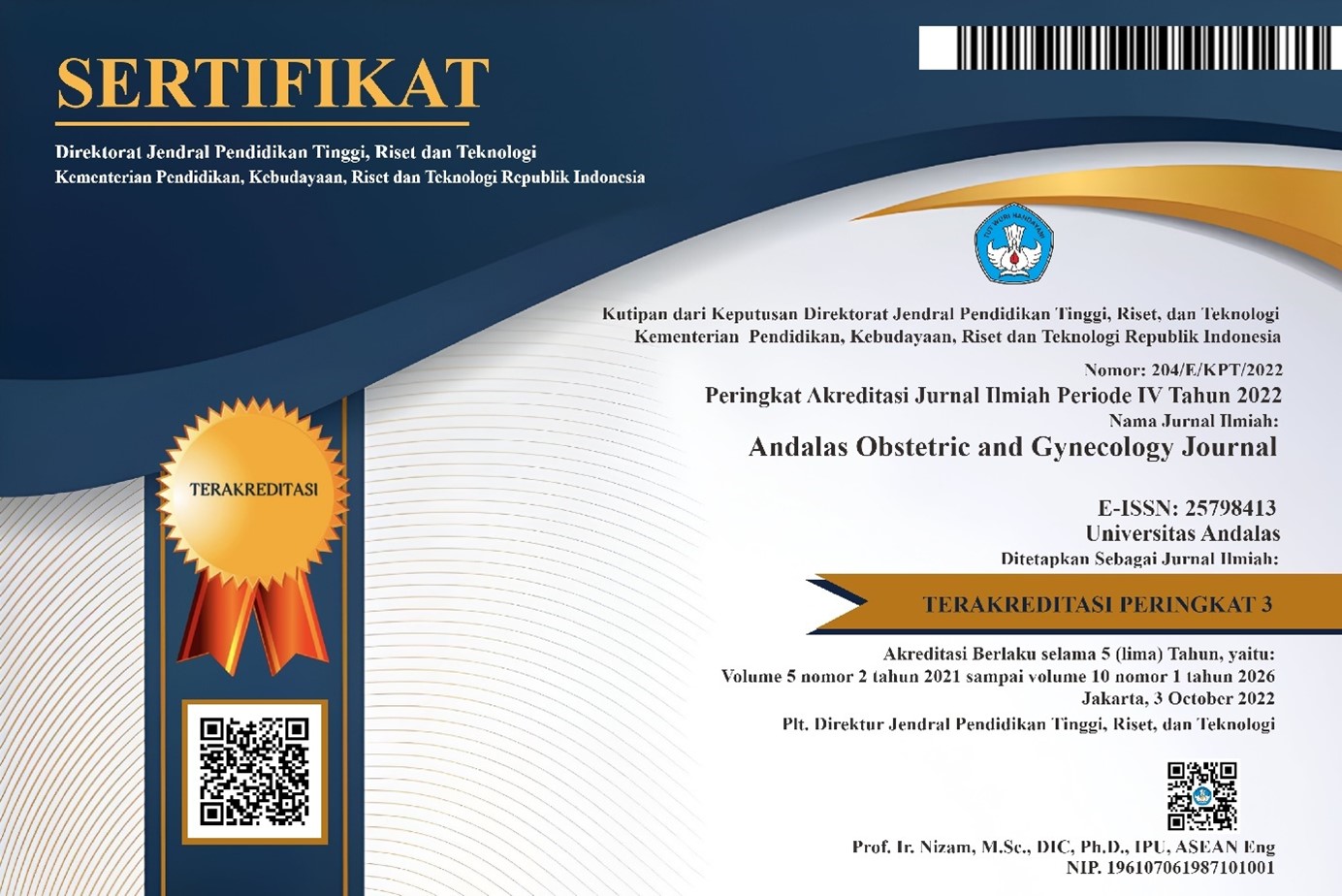Pelvic Floor Distress Inventory (PFDI)-20 Score In Patients With Pelvic Organ Prolaps (POP)
DOI:
https://doi.org/10.25077/aoj.8.2.693-702.2024Keywords:
Pelvic Organ Prolapse (POP), Pelvic Floor Dysfunction (PFD), Pelvic Floor Distress Inventory (PFDI)-20 ScoreAbstract
Background :Pelvic organ prolapse (POP) is a common and benign condition in women. It was the fall of one or more components of the vagina and uterus, which allows surrounding organs to herniate into the vaginal area, a disease known as cystocele, rectocele, or enterocele. The PFDI-20 score has been used to evaluate symptoms and quality of life in all POP patients.
Objectives : To analyze the PFDI-20 score in patients with POP.
Method : An observational study involving POP patients was undertaken at RSUP Dr. M. Djamil Padang from December 2023 to January 2024. The variables include demographic information (age, parity, obstetric and gynecological history) gathered from medical records, as well as complaints and POP symptoms obtained through an interview using the Indonesian PFDI-20 score. Data was analyzed univariately and bivariately. Statistical significance was set at p<0.05, and statistical analyzes were conducted using Kruskal-Wallis. The statistical program used for the analysis was SPSS 25.0.
Results : Twenty-eight ladies participated. Their average age was 64.43 years (SD=10.49), parity number was 4.5 (SD=2.2), and PDFI-20 score was 136.61 (SD=54.21). In terms of POP, 53.6% (15) were IV. In terms of prolapse type, all patients had uterine prolapses, with the majority also having cystocele and rectocele (96.4%). Total vaginal hysterectomy (TVH) was performed in 82.1% (23), with over half of the patients undergoing anterior colporrhaphy (AC), posterior colpoperineorrhaphy, or colpocleisis. The majority of the complaints concerned inactive sexual activity (92.0%) and frequency (64.3%). The bivariate analysis with Kruskal Wallis test revealed no statistically significant relationships between PDFI-20 score and degree of POP (p<0.05).
Conclusion : Although we were unable to identify a significant correlation, the PFDI-20 score was demonstrated to be a reliable tool for assessing symptoms and quality of life in all POP patients.
Downloads
Published
Issue
Section
License
Copyright (c) 2024 dr. Yulia Margaretta Sari, Sp.OG, Subsp. Urogin.Re, Mila Permata Sari

This work is licensed under a Creative Commons Attribution 4.0 International License.
Copyright
Authors who publish with this journal agree to the following terms:
- Authors retain the copyright of published articles and grant the journal right of first publication with the work simultaneously licensed under a Creative Commons Attribution 4.0 International License that allows others to share the work with an acknowledgment of the work's authorship and initial publication in this journal.
- Authors are able to enter into separate, additional contractual arrangements for the non-exclusive distribution of the journal's published version of the work (e.g., post it to an institutional repository or publish it in a book), with an acknowledgment of its initial publication in this journal.
- Authors are permitted and encouraged to post their work online (e.g., in institutional repositories or on their website) prior to and during the submission process, as it can lead to productive exchanges, as well as earlier and greater citation of published work (See The Effect of Open Access).
License:
Andalas Obstetrics and Gynecology Journal (AOJ) is published under the terms of the Creative Commons Attribution 4.0 International License. This license permits anyone to copy and redistribute this material in any form or format, compose, modify, and make derivatives of this material for any purpose, including commercial purposes, as long as they credit the author for the original work.







